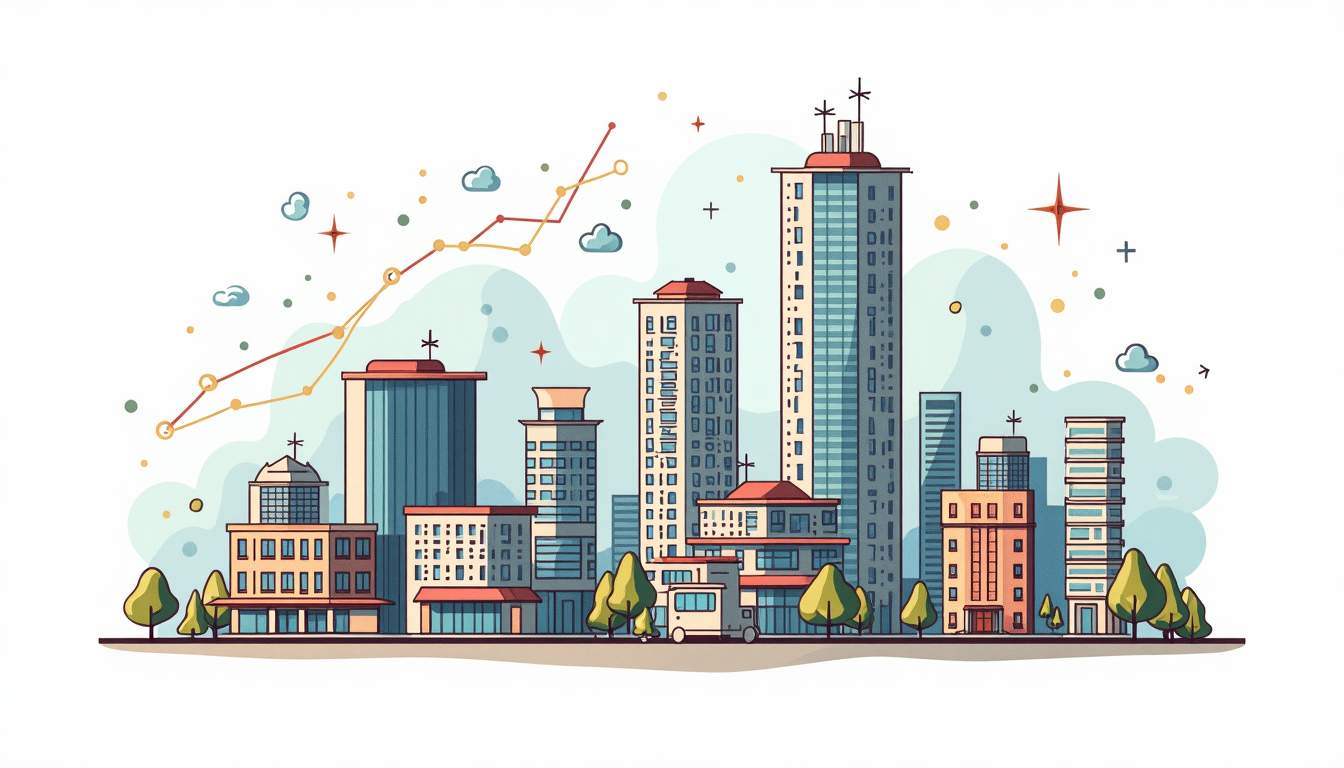Imagine walking into a sleek office building downtown, or passing by a bustling shopping center, and realizing these aren’t just places people work or shop-they’re opportunities for serious investment. Commercial real estate (CRE) can be a powerful way to build wealth, but it’s a different beast from buying a home. Knowing where to start and what to watch out for can make all the difference.
Understanding What Commercial Real Estate Really Is
Commercial real estate isn’t just one thing. It includes office buildings, retail spaces, warehouses, industrial properties, and even multi-family apartment complexes. Each type comes with its own set of risks, rewards, and management challenges.
Unlike residential real estate, which is primarily about living spaces, commercial properties are income-producing assets. Investors typically earn money through rental income and property appreciation. But because these properties often involve longer leases and larger sums of money, the stakes are higher.
Types of Commercial Properties
Office buildings range from skyscrapers in city centers to small suburban office parks. Retail properties include strip malls, standalone stores, and large shopping centers. Industrial spaces cover warehouses, distribution centers, and manufacturing facilities. Multi-family properties are residential buildings with multiple units, like apartment complexes, but they’re often classified as commercial due to their income-generating nature.
Knowing the differences helps you align your investment with your goals and risk tolerance. For instance, retail spaces can be affected by changing shopping habits, while industrial properties might benefit from the rise of e-commerce and logistics. Additionally, the location of these properties plays a crucial role in their success; a prime location can significantly enhance demand and rental rates, while properties in less desirable areas may struggle to attract tenants.
Furthermore, understanding the local market trends is essential for any investor. For example, the growth of remote work has led to a shift in demand for office spaces, prompting many owners to rethink their strategies. Some are converting traditional office buildings into mixed-use spaces that accommodate both work and leisure, while others are focusing on creating flexible environments that cater to the evolving needs of businesses. In contrast, the industrial sector continues to thrive as companies seek efficient logistics solutions, making warehouses and distribution centers more valuable than ever. Keeping an eye on these trends can provide investors with a competitive edge in the dynamic landscape of commercial real estate. For more insights and opportunities in the market, visit Property Store.
Why Commercial Real Estate Can Be a Smart Investment
Commercial real estate offers several advantages over other investment types. For one, the income potential is often higher. Commercial leases tend to be longer—sometimes 5 to 10 years or more—which can provide steady cash flow and reduce turnover costs. This stability is particularly appealing in volatile economic climates, where consistent income can be a lifeline for investors. Furthermore, the nature of commercial tenants, often being businesses rather than individuals, can lead to a more professional relationship, reducing the likelihood of late payments or disputes over property conditions.
Another benefit is the ability to pass many expenses onto tenants. In many commercial leases, tenants cover property taxes, insurance, and maintenance, which can improve your net income. This is different from residential rentals, where landlords often cover these costs. Additionally, many commercial leases are structured as triple net leases (NNN), where tenants are responsible for all operating expenses, further enhancing the landlord’s profit margins. This arrangement not only simplifies financial management but also aligns the interests of landlords and tenants, as both parties are invested in the upkeep and success of the property.
Building Equity and Wealth Over Time
As tenants pay rent and you pay down any mortgage, your equity in the property grows. Plus, commercial properties can appreciate in value, especially if you improve the property or the area becomes more desirable. This combination of income and appreciation can build substantial wealth over time. Moreover, strategic renovations or upgrades can significantly increase a property’s value, allowing savvy investors to capitalize on market trends and tenant demands. For instance, enhancing energy efficiency or updating facilities can attract higher-paying tenants and create a competitive edge in the market.
Commercial real estate also offers diversification. It doesn’t always move in sync with stock markets, so it can balance out your investment portfolio. This diversification is crucial for risk management, as it can help mitigate losses during economic downturns. Additionally, the commercial real estate sector encompasses a variety of property types, including office buildings, retail spaces, industrial properties, and multifamily units, allowing investors to tailor their portfolios to their risk tolerance and investment goals. By spreading investments across different sectors, investors can capitalize on various market dynamics, further enhancing their potential for long-term success.
Getting Started: What First-Time Investors Need to Know
Diving into commercial real estate without preparation can be risky. The market is complex, and the financial commitment is significant. Here’s how to approach it thoughtfully.
Assess Your Financial Situation
Commercial properties typically require larger down payments than residential homes-often 20% to 30% or more. Lenders also scrutinize your credit, income, and experience closely. Before you start shopping, get your finances in order and understand how much you can realistically invest.
Keep in mind, owning commercial real estate isn’t just about the purchase price. Factor in ongoing costs like property management, maintenance, insurance, and potential vacancies.
Choose the Right Property Type for You
Think about your goals. Are you looking for steady income or long-term appreciation? Do you want a hands-on role managing tenants, or would you prefer a more passive investment? For example, multi-family properties might be easier to finance and manage for beginners compared to industrial or retail spaces.
Also, consider location carefully. A property in a growing area with strong demand will likely perform better than one in a declining market.
Learn the Language of Commercial Real Estate
Terms like Net Operating Income (NOI), capitalization rate (cap rate), and lease types will come up frequently. Understanding these concepts helps you evaluate deals and communicate effectively with brokers, lenders, and property managers.
For example, the cap rate gives a snapshot of a property’s potential return by dividing NOI by the purchase price. It’s a quick way to compare investment opportunities, but don’t rely on it alone.
Finding and Evaluating Your First Commercial Property
Once you know what you want and can afford, it’s time to start looking. This phase requires patience and due diligence.
Work with Experienced Professionals
A commercial real estate broker can help you find properties that fit your criteria and negotiate terms. Look for someone with a good track record and local market knowledge. You’ll also want to hire a commercial real estate attorney to review contracts and a qualified inspector to assess the property’s condition.
Conduct Thorough Due Diligence
Review financial documents like rent rolls, expense statements, and lease agreements. Understand who your tenants are, the terms of their leases, and the property’s occupancy rate. Check for any deferred maintenance or upcoming capital expenditures that could impact your budget.
Visit the property multiple times at different hours to get a feel for the neighborhood and tenant activity. Talk to current tenants if possible-they can provide insights you won’t find on paper.
Crunch the Numbers Carefully
Calculate your expected cash flow by subtracting operating expenses and debt service from your rental income. Make conservative estimates to account for vacancies and unexpected costs. Remember, a property that looks great on paper might not perform as well in reality.
Financing Your Commercial Real Estate Investment
Securing financing for commercial properties is different from residential mortgages. Lenders focus heavily on the property’s income potential and your financial strength.

Types of Commercial Loans
Common options include traditional bank loans, Small Business Administration (SBA) loans, and commercial mortgage-backed securities (CMBS). Each has pros and cons. For example, SBA loans often have lower down payments and longer terms but come with strict eligibility requirements.
Interest rates on commercial loans tend to be higher than residential ones, and loan terms are usually shorter, often 5 to 10 years with amortization over 20 to 25 years. This means you might face a balloon payment at the end, so plan accordingly.
Preparing Your Loan Application
Lenders will want to see your credit history, financial statements, tax returns, and a detailed business plan for the property. Demonstrating experience in real estate or a solid plan for property management can improve your chances.
Building relationships with lenders and shopping around for the best terms can save you thousands over the life of the loan.
Managing Your Commercial Property
Owning commercial real estate means more than just collecting rent. Effective management is key to protecting your investment and maximizing returns.
Decide How Hands-On You Want to Be
Some investors manage properties themselves, handling tenant relations, maintenance, and leasing. Others hire professional property management companies to take care of day-to-day operations. Management fees typically run 4% to 10% of gross rental income but can be worth it for the time and expertise saved.
Maintain Good Tenant Relationships
Long-term tenants provide stability. Respond promptly to maintenance requests, keep common areas clean, and communicate clearly about lease terms and any changes. Happy tenants are more likely to renew leases and take care of the property.
Stay on Top of Maintenance and Upgrades
Regular inspections and preventative maintenance can prevent costly repairs down the line. Upgrading systems like HVAC, lighting, or security can also attract higher-quality tenants and justify rent increases.
Risks and Challenges to Keep in Mind
Commercial real estate isn’t without its pitfalls. Market downturns, tenant vacancies, and unexpected expenses can impact your investment.

Market Cycles and Economic Factors
CRE markets fluctuate with the economy. A recession can lead to higher vacancy rates and lower rents. Understanding local market trends and having a financial cushion can help you weather downturns.
Tenant Risk
Commercial tenants vary widely in financial stability. Losing a major tenant can create a significant income gap. Diversifying your tenant mix and vetting tenants carefully reduces this risk.
Liquidity and Exit Strategies
Commercial properties are less liquid than stocks or bonds. Selling can take months or longer, especially in a slow market. Have a clear exit strategy and be prepared for the long haul.
Final Thoughts
Commercial real estate investing can be rewarding but requires education, patience, and careful planning. Start small, build knowledge, and surround yourself with experienced professionals. Over time, you’ll gain confidence and be better equipped to seize bigger opportunities.

Remember, every successful investor started somewhere. The key is to learn, stay disciplined, and keep your eyes open for deals that fit your goals and risk tolerance. With the right approach, commercial real estate can be a cornerstone of your financial future.